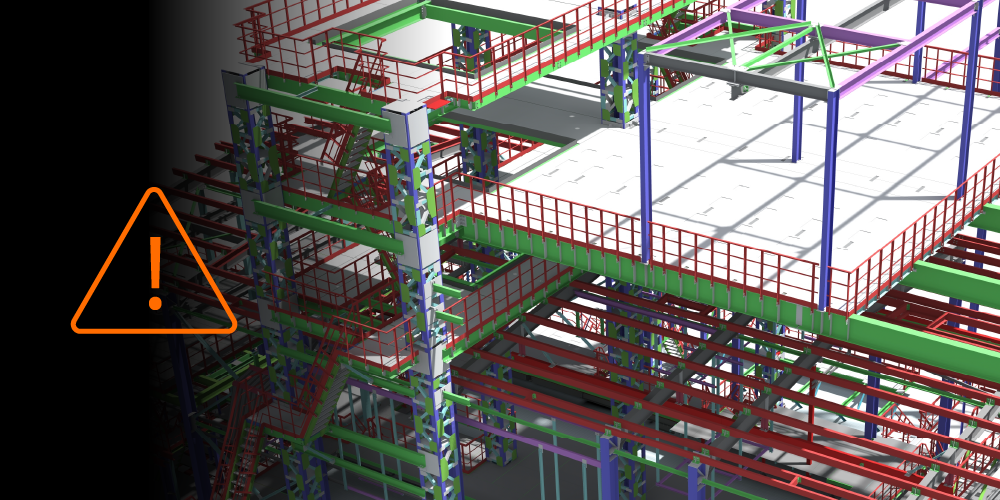Related Articles
— 8 min read
Understanding Construction Milestones: What They Are and Why They Matter

Last Updated Aug 28, 2025

Josh Krissansen
47 articles
Josh Krissansen is a freelance writer with two years of experience contributing to Procore's educational library. He specialises in transforming complex construction concepts into clear, actionable insights for professionals in the industry.
Last Updated Aug 28, 2025

Construction milestones help drive timely, cost-effective project delivery in commercial builds. They bring structure to complex construction programs, support accountability, and enable better planning and coordination across teams.
When milestones are poorly defined or overlooked, the risk of delays, cost blowouts, and stakeholder misalignment increases.
This article explores what construction milestones are and how effective milestone management supports successful project outcomes.
Table of contents
What Are Construction Milestones?
Construction milestones are fixed checkpoints that represent the completion of major project phases. Unlike individual tasks, milestones mark outcomes such as foundation pour, lock-up, or practical completion.
They are used to sequence construction activities and define the critical path within a project schedule. Many milestones are tied to formal inspections, regulatory sign-offs, or contract conditions that must be met before subsequent work can proceed.
Milestones also support structured planning.
Tools such as Gantt charts, critical path method schedules, and 4D BIM models use milestones to organise project timelines and visualise progress. Standard milestones appear across most commercial builds, while others are added based on project scope or regulatory requirements.
Why Construction Milestones Matter in Project Management
Milestones allow teams to measure progress against program targets and respond quickly when timelines shift. When delays occur, milestone tracking helps project managers identify the impact and reallocate resources or resequence work accordingly.
They also improve communication. Milestones give crews, clients, and subcontractors a shared frame of reference, making it easier to coordinate work, manage expectations, and track changes.
Missing milestones, particularly those on the critical path, can lead to delay penalties, disputes, or added cost. Reviewing milestone progress helps surface risks early, including labour shortfalls, access issues, or supply chain disruptions.
Effective milestone planning supports:
- Stakeholder alignment: Providing a shared reference point without needing to track individual tasks.
- Operational decision-making: Helping project managers and contractors coordinate teams and workflows.
- Contingency planning: Flagging high-risk stages where buffers or alternate plans may be required.
- Client confidence: Demonstrating structured delivery and reducing the likelihood of unexpected delays or budget blowouts.
Regular milestone reviews reinforce accountability and keep teams aligned on current priorities.
Key Construction Milestones in a Typical Project Lifecycle
Most commercial projects follow a common sequence of milestones that guide scheduling, procurement, and delivery. These checkpoints anchor the program and define when teams can progress to the next phase.
Project Initiation
This milestone marks the formal start of the project. It includes contract execution, entitlement, and early-phase planning activities that establish the baseline for milestone tracking and program development.
Design and Approvals
Before procurement or site works can begin, the project team must finalise architectural design and secure relevant approvals. This includes planning permits, development applications, and building permits required under local regulations.
Procurement
At this stage, builders tender packages, appoint subcontractors, and lock in critical materials. Long-lead items are prioritised to secure supply and enable accurate construction sequencing.
Excavation and Site Preparation
Often the first milestone on-site, this phase includes clearing, grading, and excavation works. It prepares the site for foundation construction and may require temporary works or environmental controls.
Foundation Completion
Substructure works, such as slab pours or piling, are completed. This milestone allows teams to begin structure delivery and may reduce site risk by closing off excavation areas.
Framing and Structural Completion
The project reaches structural height, with steel, concrete, or timber frames fully erected. In many cases, this milestone also marks topping out and signals readiness for enclosure.
Roofing and Enclosure (Lock-Up)
The building is sealed from weather, with roof installation and external openings closed. Lock-up may also include service elements like lift installation that free up hoists and drive staging for interior trades.
Services Rough-In (MEP)
Mechanical, electrical, and plumbing systems are installed before internal walls are closed. This phase includes key inspections such as pressure testing of fire protection systems.
Interior and Exterior Finishes
Finishing trades deliver flooring, plastering, cladding, paint, and other visual elements. This stage often runs in parallel with systems commissioning and final fit-out of plant, equipment, or furniture.
Defects List and Rectification
Any remaining issues identified during inspection are documented and resolved. This milestone may span both pre-handover and the post-handover defects liability period.
Substantial Completion
The building is deemed fit for intended use. This milestone often triggers final progress claims, release of retention, and commencement of the warranty or defects liability period.
Handover
The contractor formally transfers the asset to the client during the handover. This includes final walkthroughs, delivery of manuals, keys, and handover documents, and any required operational training.
Certificate of Occupancy or Practical Completion Certification
Statutory approvals are finalised to confirm the building is compliant and safe for occupation.
This may be a prerequisite for tenancy fit-outs or commercial use. For example, in Victoria, an Occupancy Permit must be issued by the building surveyor before tenants can begin fit-out works or occupy the premises.
Best Practices for Setting and Tracking Construction Milestones
1. Choose Milestones That Indicate Real Progress
Each milestone should reflect a tangible shift in the project. Milestones should serve as control points in the program. Their completion should indicate that a phase of work is finished and that subsequent trades or inspections can proceed. This allows teams to coordinate activities, forecast delivery, and identify risks before they escalate.
Pro Tip
Use outcomes like “foundation complete” or “roof installed” rather than internal steps such as “formwork poured” or “window delivery received.” A good milestone marks visible, verifiable progress that can be clearly communicated and measured.
2. Use Standard Milestones, Then Customise for the Project
Most commercial projects can be built around a core milestone set such as project initiation, lock-up, services rough-in, practical completion, and handover. These are familiar to contractors, consultants, and clients, and provide a consistent framework for monitoring progress.
From there, tailor additional milestones to reflect project-specific requirements.
Builds with complex staging, regulatory constraints, or specialised systems may need extra checkpoints. For example, a laboratory fit-out may include milestones for service certification or cleanroom validation.
Pro Tip
Custom milestones should only be added where they support visibility, sequencing, or stakeholder engagement. Avoid cluttering the schedule with checkpoints that are too granular or have no clear function in delivery or approval workflows.
3. Map Milestones to the Critical Path
Milestones should support time management, not just reporting.
Use critical path method scheduling or pull planning to identify which milestones influence the overall program duration. These are the ones that require the most attention and coordination.
Typical critical path milestones include:
- Structure completion
- Key services installation
These usually involve trade interfaces or dependencies that can affect multiple areas of the build. Milestones tied to these points must be tracked closely and supported with contingency where needed.
Pro Tip
Ensure all site leaders understand which milestones affect the final delivery date and how their work contributes. Awareness drives ownership. When teams know which outcomes keep the program moving, they are more likely to flag risks, re-sequence work, or escalate delays early.
4. Link Milestones to Financial and Contractual Objectives
Milestones are more effective when linked to commercial outcomes. Link key milestones (such as lock-up, services commissioning, and substantial completion) to payment claims, retention release, or entitlement to extensions of time.
Clearly document milestone conditions in the contract, so all parties agree on when deliverables are met and what financial actions they trigger.
Be clear about what needs to be achieved before a milestone is certified. For example, lock-up might mean external walls and roof are sealed, or it could include lift installation to release the hoist. Confirming definitions early reduces friction during payment claim approvals or handovers.
5. Make Milestones Visible to Everyone
Milestones should not live in the scheduler’s file alone. They need to be visible, current, and embedded in the tools teams use daily. Add them to Gantt charts, dashboards, site reports, and weekly coordination decks.
Where possible, use visual aids such as milestone maps, 4D BIM sequences, or phase diagrams. These help crews and subcontractors see how work is progressing and what needs to be ready for the next phase.
Pro Tip
Reinforce key milestones during toolbox talks, site meetings, and client briefings. Treat them as shared delivery targets, not internal tracking points. When everyone knows what the next milestone is, teams are more likely to coordinate effectively to reach it.
6. Review, Adjust, and Learn from Milestone Data
Milestone tracking is not a one-time exercise. Use weekly coordination meetings to assess progress and adjust forecasts where needed. If a milestone slips, identify the cause and address the blocker quickly to avoid cascading delays.
Track delay causes such as weather, late deliveries, access constraints, or resource gaps. For example, if repeated access delays were flagged across multiple jobs, this could justify early engagement with local councils or alternate site entry planning in future tenders.
At project close, review milestone performance.
- Which ones were useful?
- Which created confusion or dispute?
- What changes would make tracking more effective?
Apply these lessons to improve milestone setup, sequencing, and team engagement on the next project.
Construction milestones keep commercial projects on track and aligned across teams.
Construction milestones mark the key phases that keep commercial projects moving on time and on budget. When defined clearly and tracked consistently, they improve planning, accountability, and coordination across every stage of the build.
Categories:
Written by

Josh Krissansen
47 articles
Josh Krissansen is a freelance writer with two years of experience contributing to Procore's educational library. He specialises in transforming complex construction concepts into clear, actionable insights for professionals in the industry.
View profileExplore more helpful resources

Managing Direct Costs in Construction: How Visibility Drives Profitability
Direct costs define the financial reality of every construction project. They cover the labour, materials, and equipment that drive delivery and determine profitability. But even the best-planned budgets can shift...

BIM Clash Detection: Reducing Rework, Delays, and Risk in Construction
Design clashes can be a significant hidden cost in construction, as each conflict between systems risks expensive rework, project delays, and reduced margins. BIM clash detection empowers teams to identify...

Next-Gen Job-Costing: Ready to Move? 5 Things to Consider Before You Get Started
In this three-part series, Quantity Surveyor turned Financial Solutions Specialist Clint Burgess uncovers the real-world gains for people, processes, and profits when businesses move from legacy to next-generation Enterprise Resource...

From Workarounds to Workflow: Solving Construction’s Legacy Job-Costing System Challenges with Next-Gen Tools
In this three-part series, Quantity Surveyor turned Financial Solutions Specialist Clint Burgess uncovers the real-world gains for people, processes, and profits when businesses move from legacy to next-generation Enterprise Resource...
